
Estonian studio Arsenit has completed an elevated timber retreat nestled in the trees close to the country’s largest waterfall. Named ‘Piil’ after the Estonian word ‘pilluma’ which means ‘peeking/looking,’ the 30-foot-tall prefabricated treehouse is elevated off the ground to minimize its interference with the forest surface while providing generous views across the Estonian countryside.
The treehouse was designed to stand on one ‘leg’, which supports an accommodation module above. A discreet door provides access to the interior, with the cladding layer peeled back to reveal the metal structure supporting the cantilever. Both the leg and accommodation modules act as large steel trusses wrapped in pine cladding. While the leg module contains a staircase, services, and sports equipment storage, the accommodation module provides a living room and raised bedroom.
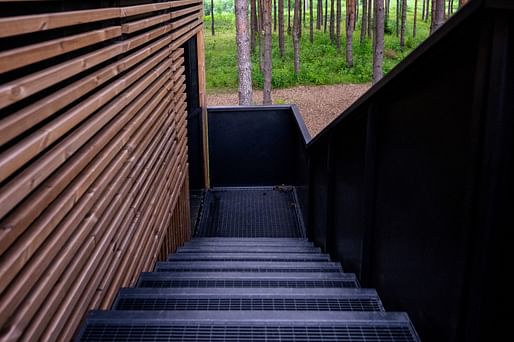
Externally, the scheme is finished in untreated, thermally modified pine by Thermory; a material that requires little maintenance and will weather naturally to a silver-grey, further blending the structure with its wilderness surroundings.

“The use of this rain-screen cladding with a square cross-section adds visual depth; filters light and air into the building while giving it a monolithic appearance; provides shade to the openable window; encloses a ground-level storage space; screens services and MVHR grilles. Finally, the directionality of the timber cladding accentuates Piil's unique form,” the studio explains.

The interior is conceived as a large piece of joinery finished in white-washed oak. The interplay of levels allows horizontal surfaces to be used informally as tables, seats, or display spaces, while the vertical timber paneling adds a treehouse-like quality.
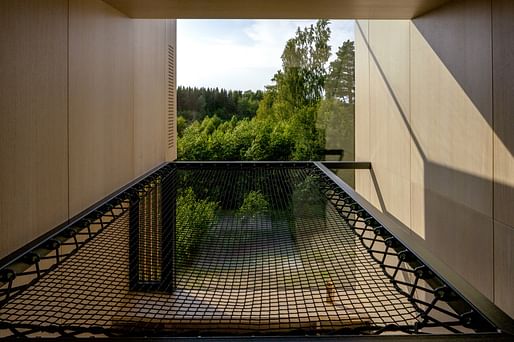
Imagined as a space for both remote work and rest, the interior holds a king-size bed, two working tables, a kitchenette, concealed storage, and a bathroom with a top-lit shower. The defining element of the interior is the large window/skylight paired with the generous hammock mezzanine, which the studio describes as “a place to feel suspended mid-forest, with nothing but the panoramic view ahead and the gentle sway of treetops above.”
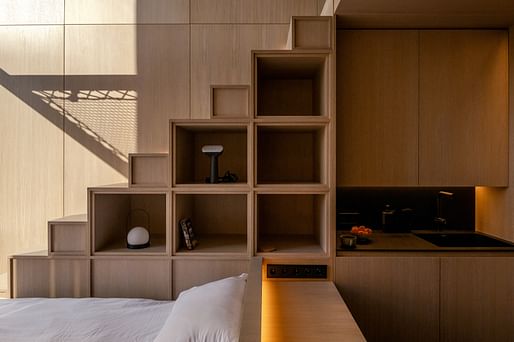
All elements of the treehouse are finished in an off-site factory before being delivered to the site for assembly. An air-source heat pump provides ventilation, heating, cooling, and hot water for most of the year, with additional support from an integrated radiator and external condenser. With the first prototype completed in early 2023, four treehouses are planned for the site. Each is to be carefully placed to frame sunset views of the river with the help of a point cloud model of the forest.
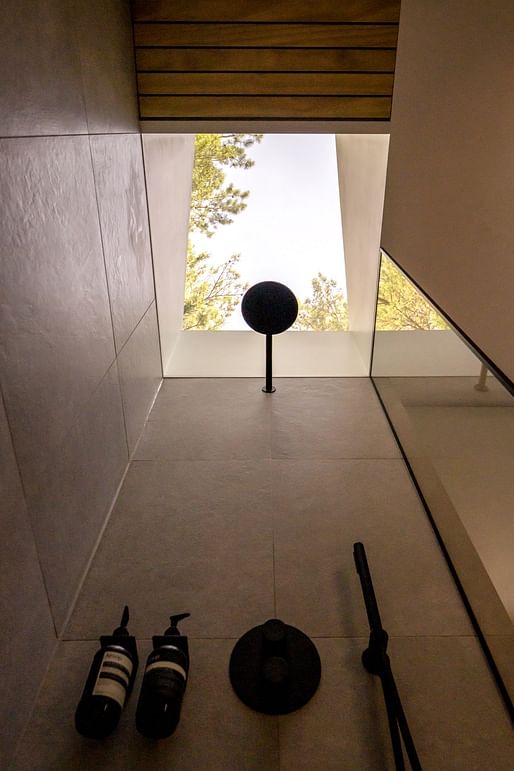
“The client’s brief was for raised ‘glamping’ accommodation, which could be used as a retreat or a micro-hotel,” Arsenit founder Arseni Timofejev explains. “Inspired by the observation towers placed in scenic locations throughout Estonia, Piil imagines what it would be like to stay in one overnight. In the first, prototype version of Piil, a single-story ‘leg’ elevates the accommodation 4.25m above ground — in future iterations, taller ‘legs’ could raise the accommodation units further into, or even above the tree branches!”
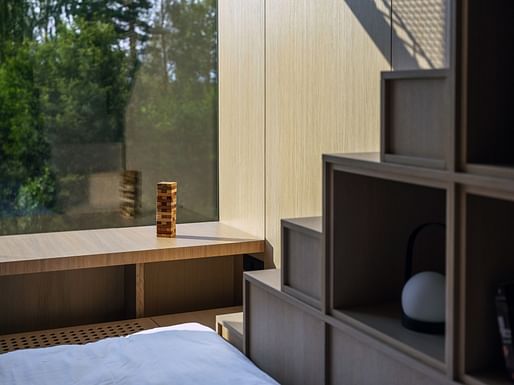
Piil is one of several treehouse-like schemes to feature in our editorial. Last year, we covered the completion of KOJA, a treehouse in Finland with an environmental message, while in previous years, we have presented a Bali-inspired treetop hotel and a treehouse hotel in the Arctic Circle. At the beginning of 2022, meanwhile, our Job Highlights series featured an open advertisement for a treehouse designer on Archinect Jobs.
No Comments
Block this user
Are you sure you want to block this user and hide all related comments throughout the site?
Archinect
This is your first comment on Archinect. Your comment will be visible once approved.